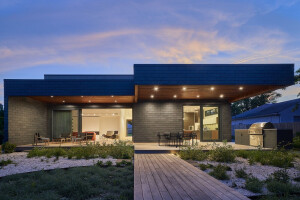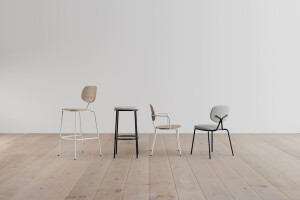The building exhibits a humble approach to its surroundings. It was constructed amidst the historic architecture of Gdańsk's Oliwa district, bordered by several streets, each with its own unique character. Its design references both the urban, townhouse-lined Grunwaldzka Avenue and Poczty Gdańskiej Street, which evokes the atmosphere of a suburban resort with old trees and city villas lining the road. The new building features an intimate courtyard, open in several directions to the distinctive spaces between existing structures.




The structure is divided into several parts, reflecting the rhythm and scale of the historic parcel divisions visible in the area. While the facade along Grunwaldzka Avenue has sloped roofs and classical rhythms typical of urban townhouses, the sections deeper into Poczty Gdańskiej and Majkowskiego Streets reference wooden bay windows and porches characteristic of the cozy historic buildings in the vicinity. To achieve architectural variety, the facades are designed with a mix of materials – from limestone panels and fine smooth plaster with mica, to ceramic roof tiles. The historicist style of the building's facades contrasts with the distinctly modern character of the publicly accessible inner courtyard.










































